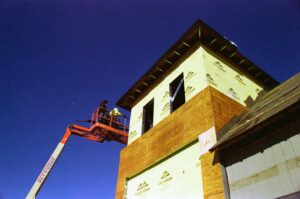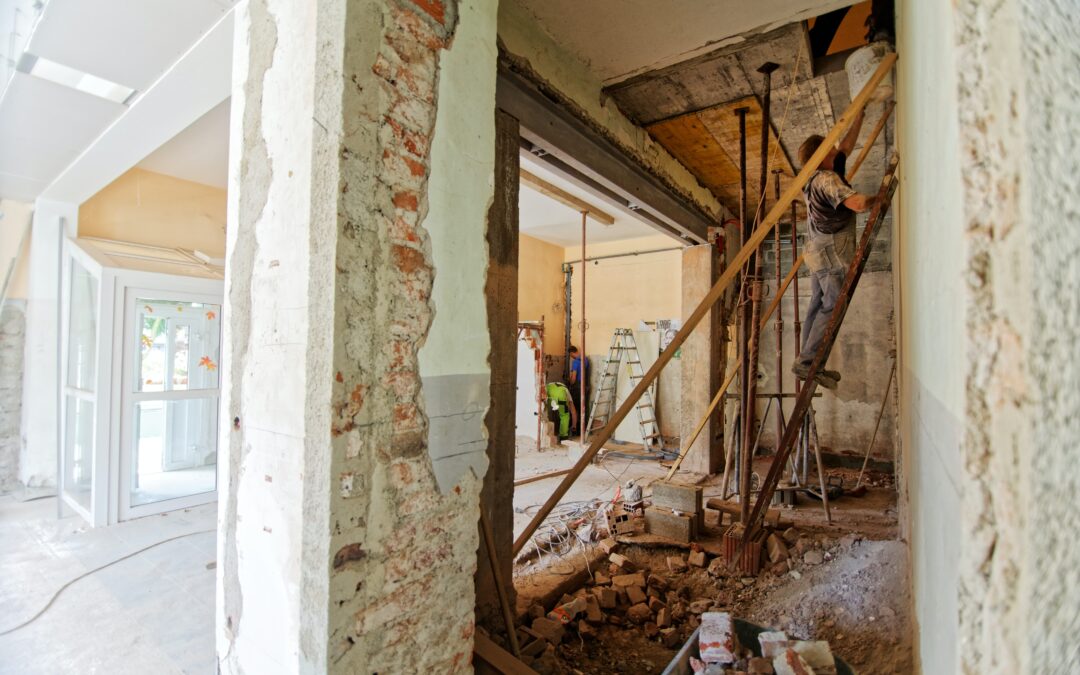The Oregon Contractors Resource Center has partnered with agents that have access to Oregon’s top builders risk programs, and they receive questions from builders across Oregon on the topic of insuring remodeling construction projects.
In this resource, we answer some of the most common questions so you can learn more about how to make sure your vision is protected throughout the course of construction.

Nuts and Bolts
Q: What type of renovations can be insured?
A: The types of renovations covered by builders risk insurance can vary from provider to provider. When researching options for your project, be sure to understand and confirm what the provider and proposed policy cover. Clients get a plan to cover basic home remodeling like replacing cabinets, as well as complex structural change renovations such as moving load-bearing walls or adding a story onto a residential home or commercial building. Consult with an insurance agent for specific project details.
Q: Who is the ideal client for this coverage?
A: The ideal client for any type of builders risk coverage, including those remodeling or renovating an existing structure, can be individuals or businesses with an insurable interest in the project. Homeowners frequently purchase coverage for remodeling. However, the client could also be a real estate investment company or a contractor conducting the project work.
Q: Can you get coverage on the existing structure being remodeled? If so, how will it be valued?
A: In many cases, builders risk insurance can protect both the existing structure and the remodeling work. This can provide valuable coverage in situations where the existing structure would not otherwise be insured. Carriers value the existing structure at actual cash value; renovations are valued at replacement cost. If the structure is being insured, occupancy can be allowed when the policy is for the homeowner with a residential, single-dwelling only.
Q: What is the difference between renovation and restoration?
A: Most carriers offer insurance coverage for renovations. A renovation, in builders risk insurance terms, means that an existing structure is being remodeled and changed, replacing old pieces with new. This includes additions, alterations, improvements, or repairs — modifications that are often performed to keep up with the latest design trends. In contrast, a restoration refers to returning an existing structure to its original condition. If you may fall under the category of “restoration” rather than a “renovation,” discuss coverage options with a qualified insurance agent.
Coverage and Policy Options
Q: What policy types are available?
A: Builders risk insurance for residential or commercial renovations must be purchased under a single project/structure policy form. Unlike residential and commercial new construction projects, the reporting form option is not available for renovations, due to the high risk of loss remodeling projects bear. So, if you have multiple renovation projects then you will have a separate policy for each project.
Q: Do you have to take out a 12-month policy?
A: Remodeling policy options include six, nine, or 12-month terms. This allows you to purchase coverage for a shorter time period when it is anticipated that your renovations will not take an entire year to complete.
Q: How does the client get an extension if the project is not complete?
A: In most cases, the policy can be extended prior to the expiration of the policy with underwriter approval. When requesting a policy extension for remodeling projects, the policy term can be for less than six months.
Misconceptions
Q: If the existing structure is covered elsewhere, is builders risk coverage available to cover just the renovation?
A: Builders risk policies can insure just the renovations, excluding existing structures. This is an important point because, although a client may have a homeowners insurance policy or other property policy already in place, renovations may be limited or specifically excluded under those policies. When clients purchase builders risk insurance for renovations, they can purchase coverage to complement what they already have protected under permanent property policies.
Q: Can the owner perform the construction work?
A: Most carriers require that a general contractor or a remodeling contractor with at least two years of project-related experience oversee the construction. If the property owner has the appropriate project experience, he or she is considered qualified to perform the work. However, clients should know that the project may be subject to other underwriting guidelines when the property owner is performing the work.
Q: Can coverage for ordinance or law be purchased on any builders risk policy?
A: Unfortunately, ordinance or law coverage is not available for remodeling or renovation projects under most carriers. Because building code standards for existing structures change over time, changes in ordinance or law could require the insured to address code standards that are beyond the scope of the remodeling project insured under the builders risk policy.
Conclusion
Chances are that many of your existing customers have homeowners or other lines of insurance and are considering remodeling or renovating their existing structures. The information we shared here will help you educate your customers and better understand the requirements involved when insuring remodeling projects.
The Oregon Contractors Resource Center can connect you with the best agent that has the experience and expertise that you need to make sure your projects are protected.
For more guidance on insuring your course of construction projects, contact our dedicated team to get connected with the right insurance agent that focuses on the contracting industry.

